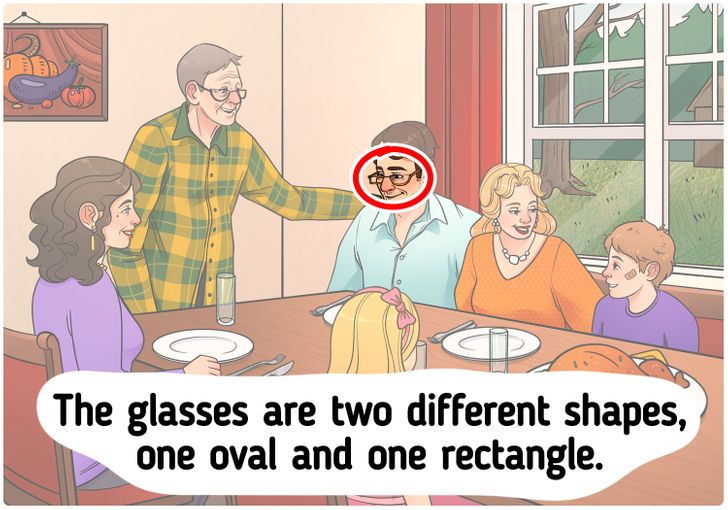Visual brain teasers often challenge people to slow down, look more carefully, and notice details they would usually ignore. A recent image of a family gathered in their dining room has captivated many viewers because something in the picture is clearly wrong — but it’s not immediately obvious. The challenge is simple: find the inaccuracy in under 15 seconds. Yet, despite the short time limit, many people struggle to identify what’s out of place.
The Family Scene at First Glance
The image shows a cheerful family enjoying a meal at a neatly set dining table. Everything appears warm and inviting: plates arranged in front of each person, bowls of food in the center, flowers decorating the room, and sunlight spilling through the windows. It looks like a typical mealtime moment where parents and children gather to share food and conversation.
Because the setting feels familiar and ordinary, most viewers initially don’t suspect anything unusual. This is what makes the puzzle so effective — the error is hiding in plain sight.

The Purpose of These Visual Challenges
Images like this are designed to test observation skills, concentration, and visual memory. Many people assume they are paying close attention, but puzzles like this reveal how easily the brain filters out details it considers unimportant.
The trick lies in directing attention away from the obvious and encouraging the viewer to notice the subtle inconsistencies. Often, the mistake in these pictures relates to an object that doesn’t belong, a mismatch in design, something physically impossible, or a detail that contradicts everyday logic.
Looking Beyond the Surface
When viewers take a closer look at the dining room picture, they begin scanning the furniture, the tableware, and the people seated around the table. Are all the chairs positioned naturally? Do the plates match the food in front of them? Is the lighting consistent with the shadows?
Some people become convinced that the error must be with the food arrangement, while others focus on the windows or decorations. Because everything seems coordinated, the brain tries to justify what it sees instead of questioning it. This tendency to assume normalcy often delays the moment of recognition.
The Hidden Inaccuracy
After analyzing the picture for longer than expected, many viewers finally spot the oddity: the father’s fork has only three prongs instead of the usual four. This small detail is easy to miss, especially because the family members are positioned naturally and nothing else about the scene appears strange.
The fork is held casually, blending into the flow of the image. Only when someone looks closely does the inaccuracy become obvious. Once noticed, it cannot be unseen, and the viewer wonders how they overlooked it at first glance.
Why This Puzzle Is Surprisingly Challenging
The difficulty of the puzzle highlights how much the mind relies on familiar patterns. People expect forks to have four prongs, so the brain quickly glosses over the utensil without examining it closely.
This visual shortcut is useful in everyday life — it helps people understand scenes quickly — but it also means small irregularities can pass unnoticed. Brain teasers that exploit this tendency are both fun and beneficial, as they exercise attention to detail and cognitive flexibility.

A Fun Way to Sharpen Observation Skills
Spot-the-difference puzzles remain popular because they offer a simple, engaging way to test perception. This dining room challenge reminds viewers that even the most ordinary scene can hide something unusual. By slowing down and observing more carefully, people can strengthen their ability to focus and notice details that others might miss.

















